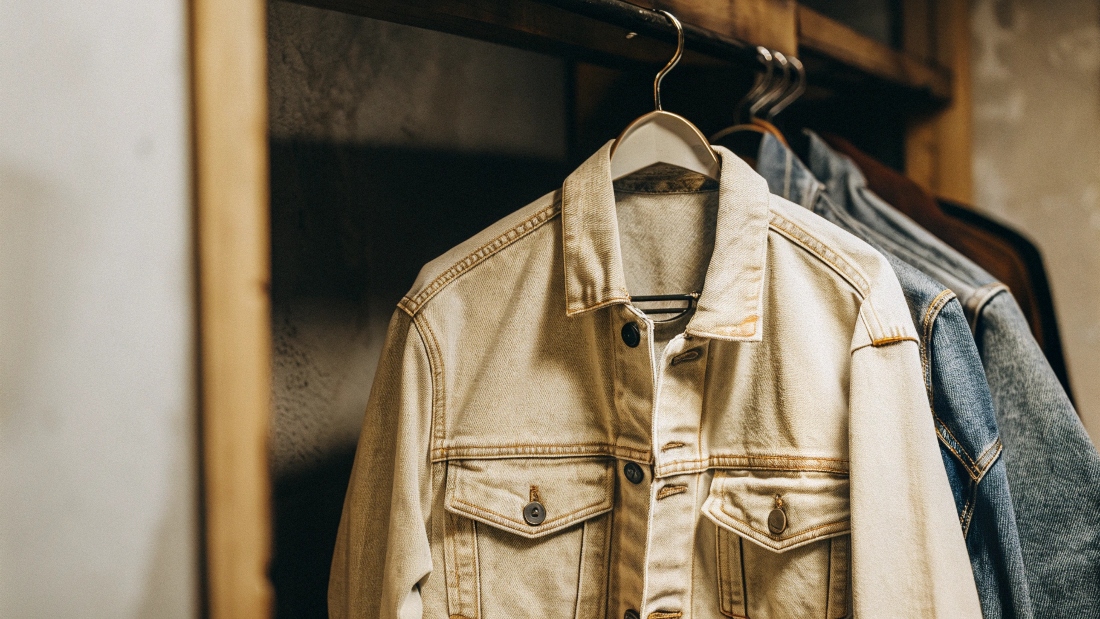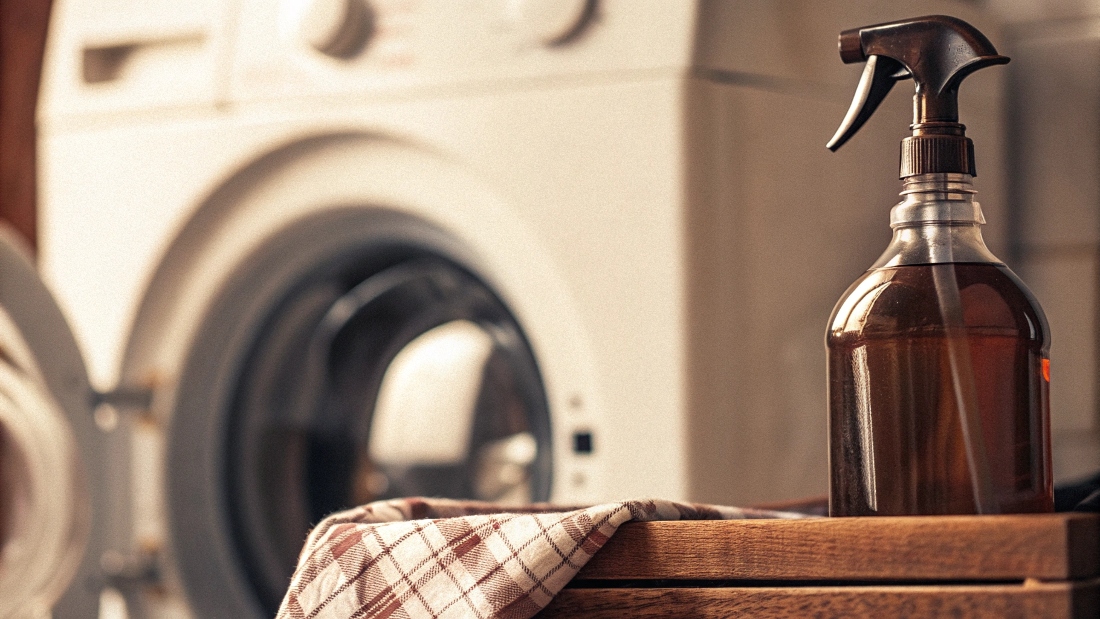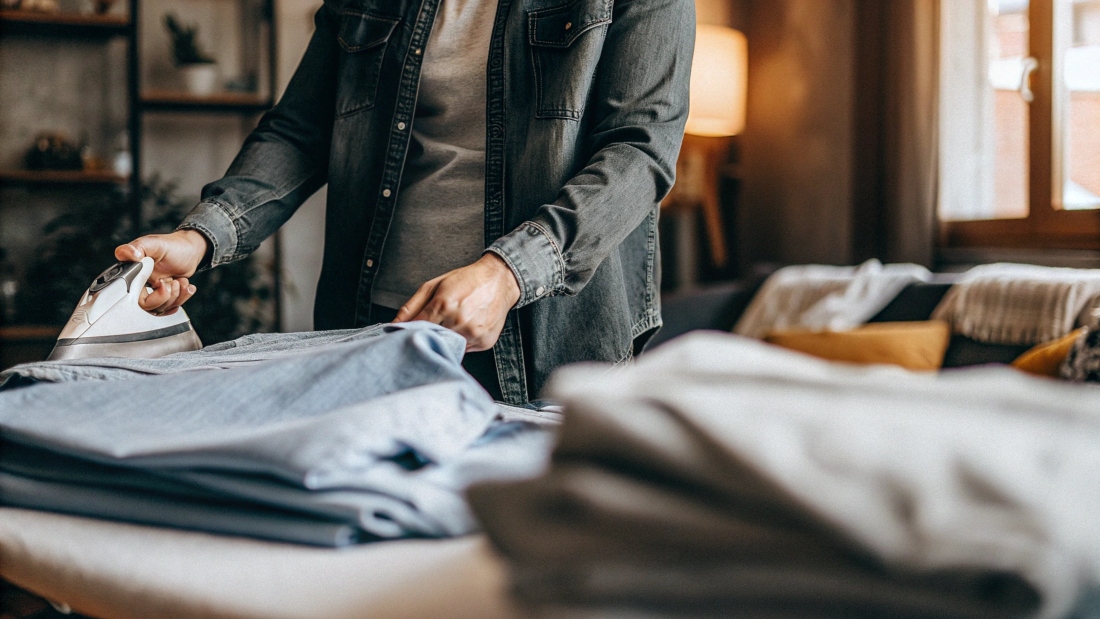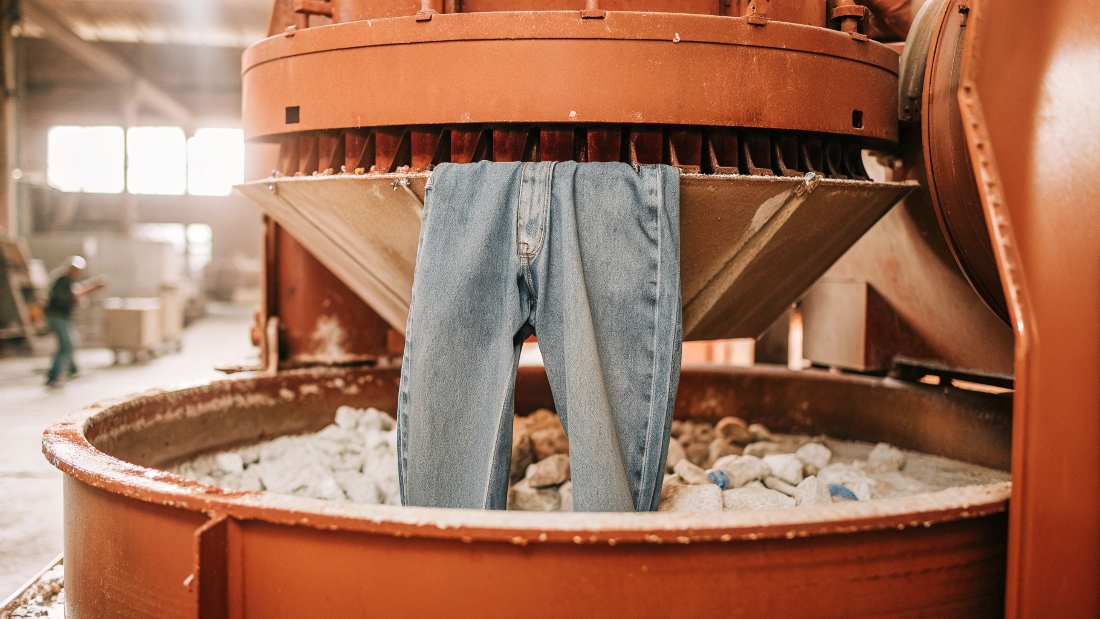You just bought a new denim jacket1, but it feels stiff and rigid, like you're wearing cardboard. It's uncomfortable, and you can't imagine wearing it for a full day.
To soften a stiff denim jacket, wash it in warm water with one cup of white vinegar2 in the rinse cycle. Then, dry it on low heat with a few tennis balls to physically break down the stiff fibers.
In my 20 years of making jeans at my factory, DiZNEW, I've seen every kind of denim imaginable. The stiffest denim is often the highest quality, but it's not very comfortable "off the rack."
The stiffness comes from something called "sizing3," a starchy finish applied at the fabric mill. It helps with the cutting and sewing process, but you don't need it.
I'm going to show you exactly how we break down that stiffness, using tricks you can do right at home.
How do you soften a denim jacket?
You want to wear your new jacket now, not in six months. The stiffness is keeping it in your closet, and you're looking for a simple, quick way to make it wearable.
The easiest method is a special wash and dry cycle. Use white vinegar2 or baking soda4 in the wash to dissolve the stiff sizing, and then use dryer balls to physically beat the fabric soft.
You don't need to buy expensive fabric softeners. In fact, most commercial softeners just coat the fibers with a waxy film, which can build up and make denim feel greasy.
The best tools are already in your kitchen. Vinegar's natural acid is perfect for breaking down the starchy sizing that makes the fabric rigid. Baking soda works similarly by helping to soften the water and strip away residues.
The final step, using tennis or wool dryer balls, is like a mini-stonewash in your dryer. It just speeds up the natural breaking-in process5.
Dive Deeper: The Wash & Dry Method
| Step | Action | Why It Works |
|---|---|---|
| 1. Prepare | Turn your jacket inside out and zip or button it up. This protects the color and hardware. | Reduces fading on the outside surface and prevents hardware from damaging your machine. |
| 2. Wash | Wash the jacket by itself in warm water. Add your normal detergent. When the rinse cycle starts, add 1 cup of white vinegar. | The warm water opens up the cotton fibers. The vinegar's acid dissolves the stiff sizing. |
| 3. Dry | Tumble dry on low or medium heat. Add three clean tennis balls6 or wool dryer balls to the machine with the jacket. | The constant tumbling and hitting from the balls physically pummels the fibers, making them more pliable and soft. |
How to make your denim soft?
You've tried washing your jacket, but it's still not as soft as you'd like. You start to wonder if the problem is the denim itself, and why it's so different from your soft, worn-in jeans.
The stiffness of your denim is determined by whether it's "raw" or "washed." Raw denim is unwashed and very rigid, while washed denim has already been professionally softened at the factory.
When a designer like Dean sends me a spec for a new jacket, one of the first questions is about the finish. Do they want it raw or washed? Raw denim is for the purists.
It's a blank canvas that you break in yourself over months or years. It will eventually become incredibly soft and molded to your body, but it takes work.
Most jackets you buy in a store have already been given a wash treatment—often called a "pre-wash" or "rinse wash"—to make them soft and comfortable from the very first wear. If your jacket is very dark, stiff, and almost shiny, it is probably raw denim.
Dive Deeper: Understanding Your Denim Type
| Feature | Raw Denim | Washed Denim |
|---|---|---|
| Feel | Stiff, crisp, sometimes feels like cardboard. | Soft, pliable, comfortable from the start. |
| Color | Very dark, uniform indigo or black. | Can be any shade. Often has pre-made fades (whiskers, honeycombs). |
| The Goal | To break it in yourself and create unique, personal fade patterns. | To have a comfortable, worn-in look and feel from day one. |
| Softening | Requires significant effort (multiple washes, lots of wear, patience). | Already soft, but can be made even softer with home methods. |
How to make a jacket less stiff?
Washing and drying helped, but you're impatient. You want to speed up the breaking-in process5 so your jacket feels less like armor and more like a second skin.
Beyond washing, the best way to make a jacket less stiff is to physically manipulate the fibers. Manually twisting, rubbing, and simply wearing the jacket will accelerate the softening process significantly.
Think of a new baseball glove. You don't just use it; you work it. You bend it, fold it, tie a ball in it. It's the same principle for stiff denim. The friction and movement break down the rigid cotton fibers.
The heat from your body also helps the fabric mold and soften. The absolute best thing you can do is wear it. Wear it around the house when you're cleaning or watching TV. Do some gardening in it.
The more you move, bend, and stretch in the jacket, the faster it will break in the key areas like the elbows and shoulders.
Dive Deeper: Physical Softening Techniques
You can actively break in your jacket even when you're not wearing it. Here are a few tricks I've learned over the years.
- The Denim Burrito: Lay the jacket flat and then roll it up as tightly as you possibly can, like a sleeping bag. Tie it with string and leave it for a few days. This puts the fibers under constant tension.
- The Sandpaper Trick: For a slightly distressed and softer feel, you can very gently rub fine-grit sandpaper (220 grit or higher) on areas that would naturally fade, like the elbows and seams. Be careful, as this is permanent.
- Manual Agitation: When you have a spare moment, just grab a part of the jacket and crumple it into a ball. Twist it, rub the fabric against itself. This mimics the agitation of a long wear-and-tear cycle but in a fraction of the time.
How do professionals soften denim?
You see jackets in stores that are incredibly soft, with a perfect worn-in look. You wonder how factories achieve this level of softness right from the start.
Professionals use industrial-scale techniques like stone washing, enzyme washing, and chemical softeners. These processes are designed to rapidly age and soften denim in a controlled factory environment.
When I work with a client, they give me a "target" wash—a photo or a vintage sample—and my job at DiZNEW is to replicate that feel. We don't have time to wait for a jacket to break in naturally.
We use huge washing machines that can hold hundreds of garments at a time. By combining different techniques, we can precisely control the final softness, color, and texture. Stone washing is the classic method, but now we often use cellulase enzymes.
These are special proteins that actually eat away at the surface of the cotton fibers, making the fabric dramatically softer without damaging its strength.
Dive Deeper: Industrial Denim Finishing
| Technique | Description | The Result |
|---|---|---|
| Stone Wash | Washing the jackets with porous pumice stones. The stones abrade the fabric's surface. | A classic, slightly faded, and physically softened texture. |
| Enzyme Wash | Using cellulase enzymes in the wash. These enzymes break down the cellulose on the outer layer of the cotton fibers. | A very soft, "peached" feel with less damage to the fabric than stones. |
| Silicone Softeners | A final rinse with special, textile-grade silicone softeners. This is often the last step. | A smooth, silky feel. The softeners coat the fibers to reduce friction. |
Conclusion
To soften your denim jacket, use a vinegar wash and tennis balls in the dryer. For stiff raw denim, the best method is simple: wear it as much as you can.
-
Explore this link to find tips on selecting a denim jacket that combines style and comfort. ↩
-
Discover the many uses of white vinegar in laundry, including its ability to soften fabrics naturally. ↩ ↩
-
Understand the role of sizing in fabric production and its impact on comfort. ↩
-
Learn how baking soda can enhance your laundry routine and improve fabric softness. ↩
-
Understand the breaking-in process and how to speed it up for comfort. ↩ ↩
-
Find out how tennis balls can help soften fabrics and reduce drying time. ↩



[^7] jacket and a lighter, softer washed denim jacket.](https://diznewjeans.com/wp-content/uploads/2025/09/the-stiffness-of-your-denim-is-determine.jpg)







